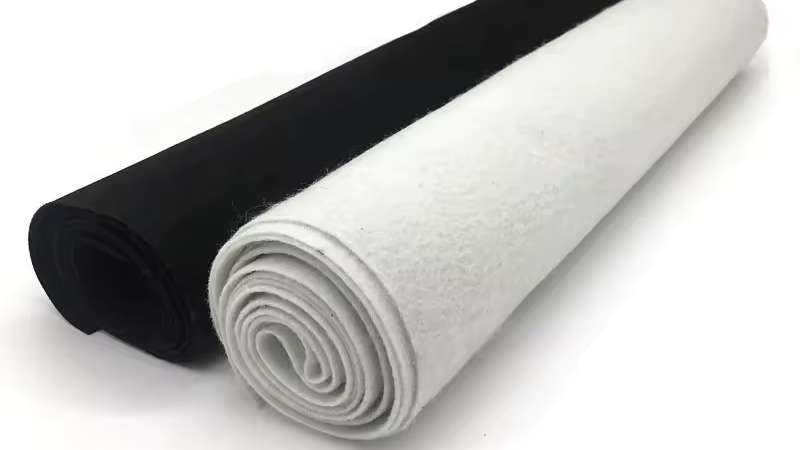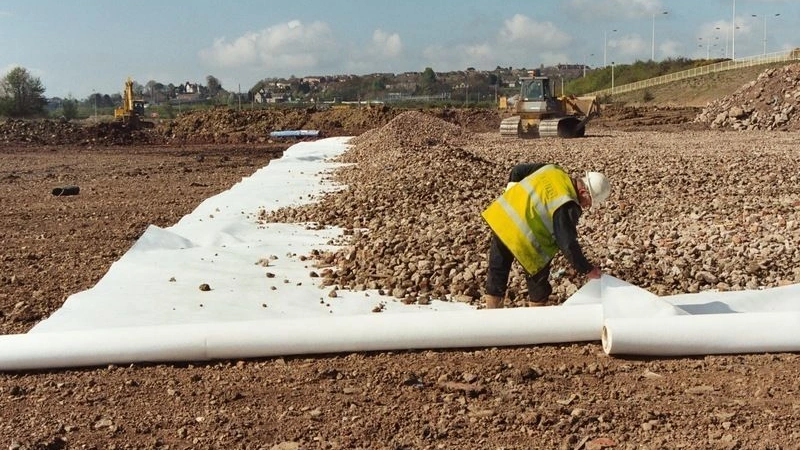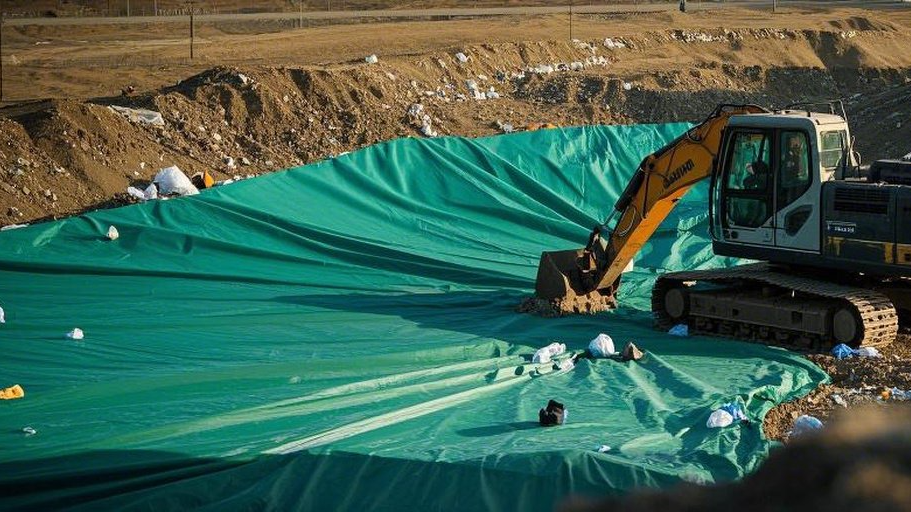Nonwoven geotextiles are common geosynthetics and are widely used in civil engineering, road construction, environmental protection engineering, agriculture and other fields. The main feature is that short fibers are processed into cloth through physical, chemical or thermal bonding processes, and have good water permeability, air permeability, tensile strength and corrosion resistance. The service life of nonwoven geotextiles varies depending on the type of material, application environment and external conditions. Understanding the service life of nonwoven geotextiles and their influencing factors is of great significance for the reasonable selection and extension of their service life.

Basic characteristics of nonwoven geotextiles
As a geosynthetic material, nonwoven geotextiles have a variety of excellent physical and chemical properties, which makes it play an important role in various projects.
- Water permeability and air permeability: nonwoven geotextiles have good water permeability and air circulation, and are widely used in drainage systems, soil reinforcement, filtration and other occasions.
- Tensile strength: nonwoven geotextiles have high tensile strength, which can effectively resist external loads and enhance soil stability in many engineering applications.
- Corrosion resistance: non-woven geotextile materials have good chemical stability, can resist the erosion of most acids, alkalis and salts, and adapt to a variety of environmental conditions.
- Easy construction: non-woven geotextiles are light in weight and easy to operate. No complex equipment is required during construction, and they are suitable for large-scale laying.
Nonwoven geotextiles Application fields and lifespan
The lifespan of nonwoven geotextiles varies in different application scenarios, as follows:
- Road and railway construction: Non-woven geotextiles are usually used for road and railway subgrade reinforcement, drainage, and prevention of soil erosion. In such applications, geotextiles are usually laid on soil layers, bedrock or gravel layers to separate, reinforce, and drain. In the absence of excessive external damage and environmental erosion, the service life of non-woven geotextiles can reach 20 to 50 years.

- Landfill: Nonwoven geotextiles are widely used in the anti-seepage layer, isolation layer, and protective layer of landfills, and are usually used to prevent leachate from infiltrating into groundwater. Due to the harsh environment of landfills and the possibility that landfill materials may contain harmful substances, the service life of geotextiles will be affected by multiple factors such as chemical corrosion, ultraviolet rays, and ambient temperature and humidity. Generally speaking, nonwoven geotextiles in scientifically designed landfill anti-seepage systems can be used for 20 to 40 years.

- Water conservancy projects: In water conservancy projects such as reservoirs and dams, non-woven geotextiles are often used for anti-seepage, waterproofing and isolation. Since most water conservancy projects are in underground environments, geotextiles will be in water or moisture for a long time, and their service life will be affected by hydrolysis, chemical corrosion and ultraviolet rays. Generally, the life of non-woven geotextiles in such applications is about 20 to 50 years.

- Mine tailings pond: Nonwoven geotextiles are used to improve the anti-seepage and stability of mine tailings ponds, which can effectively prevent the leakage of tailings liquid and protect the environment. Mine tailings ponds are usually located in remote areas and are subject to strong ultraviolet radiation and chemical erosion. Therefore, the life of geotextiles is usually between 10 and 30 years, depending on the local environment and the nature of the tailings.

Factors affecting the life of nonwoven geotextiles
- Raw material selection; The raw materials of nonwoven geotextiles directly determine their durability. Common raw materials for non-woven geotextiles include polypropylene (PP), polyester (PET) and polyethylene (HDPE). Polypropylene and polyester are the two most common materials. They have good tensile strength and weather resistance, so they usually have a long service life. Non-woven geotextiles made of high-quality raw materials have a significantly longer service life than low-quality products.
- Process and thickness; The production process of nonwoven geotextiles has a greater impact on its service life. High-quality manufacturing processes can ensure that the fibers of the geotextile are evenly arranged and the structure is tight, thereby improving its durability. In addition, the thickness of non-woven geotextiles is also an important factor affecting its service life. Generally, non-woven geotextiles with thicker thickness have stronger durability and can better resist erosion and physical damage from the external environment.
- Construction quality; Construction quality also has an important impact on the service life of non-woven geotextiles. If physical damage such as scratches, punctures, and tears is not avoided during construction, its service life may be greatly shortened. In addition, improper laying of geotextiles or loose joints may also lead to loss of function or accelerated aging of geotextiles. Therefore, ensuring construction quality and reasonably selecting construction methods can effectively extend the service life of geotextiles.
How to extend the service life of nonwoven geotextiles
In order to extend the service life of non-woven geotextiles, it is necessary to reasonably control the material selection, construction and maintenance. The following are several effective ways to extend the service life of geotextiles:
- Choose high-quality materials: Choose non-woven geotextile materials that are resistant to UV rays and corrosion, especially when used in environments exposed to sunlight, chemicals, etc. for a long time.
- Strengthen construction protection: During construction, pay attention to avoid mechanical damage to prevent non-woven geotextiles from being scratched or torn by sharp objects during laying.
- Avoid extreme environmental influences: In environments with extreme temperatures, chemical corrosion or strong ultraviolet rays, appropriate protective measures should be selected, such as covering with soil, covering, etc., to reduce the direct exposure of non-woven geotextiles.
- Regular maintenance: For geotextiles that have been put into use, it is necessary to regularly check their integrity and repair damaged parts in time to ensure their normal working functions.
Summary
The service life of non-woven geotextiles is affected by many factors, including raw materials, process, environmental conditions and construction quality. Generally speaking, in the right application environment, the service life of carefully designed and constructed non-woven geotextiles can reach 20 to 50 years. However, in special environments (such as strong acid and alkali, high ultraviolet rays, extreme temperatures, etc.), its service life may be shortened. Therefore, choosing the right geotextile, reasonable design and standardized construction are the key to extending its service life. Contact us now to get more detailed informVation and quotes about PET high-performance nonwoven geotextile!






